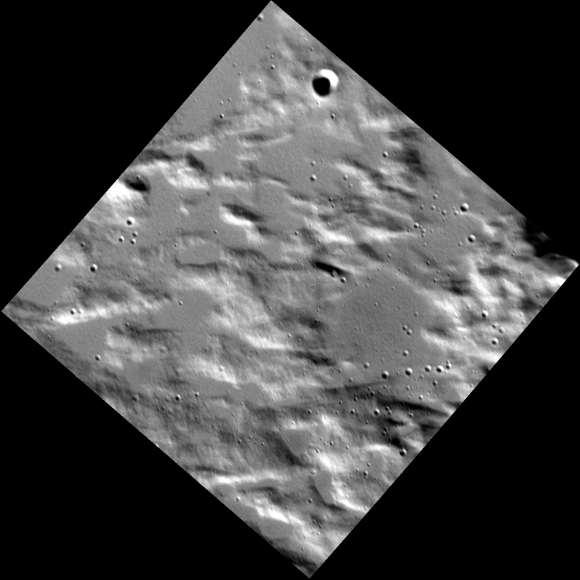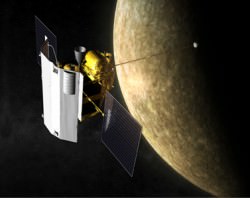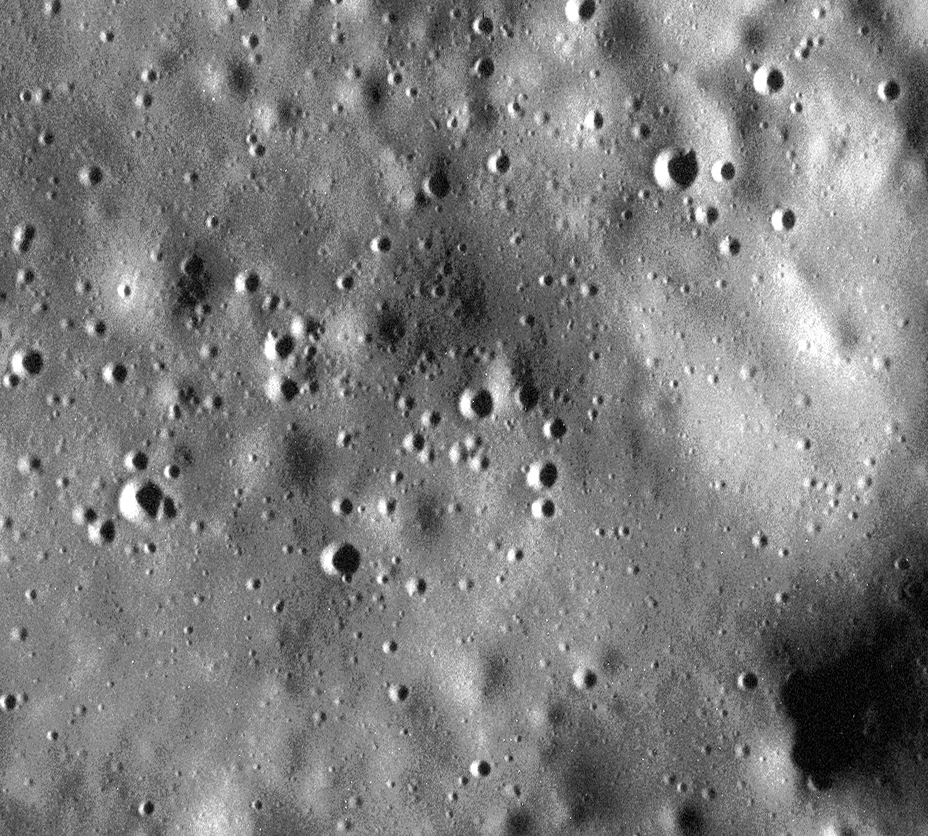Are you ready for a good close look at Mercury? At an incredible 5 meters per pixel, this is one of the highest-resolution images of Mercury’s surface ever captured. It was acquired on March 15 with the MESSENGER spacecraft’s MDIS (Mercury Dual Imaging System) instrument and shows an 8.3-km (5.2-mile) -wide section of Mercury’s north polar region, speckled with small craters and softly rolling hills.
Because MESSENGER was moving so quickly relative to the targeted area it was imaging, a short exposure time was necessary to avoid blurring. As a result the image appears a bit grainy. See the original map projection here.
Wondering what the next-best image was of Mercury? Find out below:
The previous record for most extreme close-up of Mercury was held by this image:

It was acquired as a targeted observation by MESSENGER’s Narrow-Angle Camera on April 30, 2012, and has a resolution of 7 meters/pixel. It shows an impact melt-covered area about 11 km (7 miles) across near Gaugin crater.
(Although Mercury’s surface may at first appear strikingly similar to the Moon’s, it’s been known since the Mariner 10 mission that the two worlds are very different at fundamental geologic and compositional levels. Read more on that here.)
Images like these are extremely special; during the first two years of MESSENGER’s mission in orbit around Mercury, over 150,000 images were acquired but only five images had resolutions better than 10 meters per pixel.

On April 20, 2014, MESSENGER completed its 3,000th orbit of Mercury (3,075 to date) and is steadily moving into an even lower-altitude orbit. MESSENGER now comes within less than 200 km (124 miles) of the planet’s surface when it passes over its north pole every eight hours… that’s less than half the altitude of the Space Station!
Orbiting at such a low altitude and so often will allow MESSENGER to examine Mercury’s surface in unprecedented detail. Now that 100% of the planet has been successfully mapped by MESSENGER it can spend its second — and last — extended mission investigating specific scientific targets.
“The final year of MESSENGER’s orbital operations will be an entirely new mission,” said Sean Solomon, Principal Investigator for MESSENGER. “With each orbit, our images, our surface compositional measurements, and our observations of the planet’s magnetic and gravity fields will be higher in resolution than ever before. We will be able to characterize Mercury’s near-surface particle environment for the first time. Mercury has stubbornly held on to many of its secrets, but many will at last be revealed.”
Read more in a recent news release from the MESSENGER team here.
Want to explore a high-res map of Mercury and see where MESSENGER is right now? Click here.
Image credits: NASA/Johns Hopkins University Applied Physics Laboratory/Carnegie Institution of Washington


At first sight the craters look smaller than those on the Moon. Is this real or a result of image selection?
The Moon also has craters of all sizes. See this recent LRO image showing craters inside a crater: http://lroc.sese.asu.edu/posts/516 and this one shows an area about half the width of the one above, also with plenty of small craters: http://lroc.sese.asu.edu/posts/732. Craters all the way down.